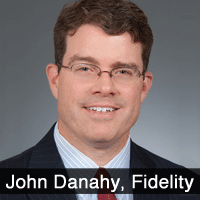
 
Robo-advisory has captured the imagination — and the investment dollars — of millennials, who are in sync with the ease and low cost of the methodology and the digital nature of the experience.
It’s a big deal. According to a recent CFA Institute poll, 40% of investment professionals believe robo-advisory is the fintech application that will have the biggest impact on the financial services industry in five years, topping blockchain (30%), marketplace / peer-to-peer lending (13%), and crowdfunding (11%).
But the term itself can be unsettling, as robo-advisory connotes a robot making investment decisions, supported by an automated, Siri-like chat or voice response system. Humans have no direct role in this highly impersonal structure.
Given that perception, wealth managers not surprisingly have eschewed the robo- prefix. Instead, some of the larger platforms offering services that some people would categorize as robo-advisory are called Schwab Intelligent Portfolios, Fidelity Go, and Vanguard Personal Advisor Services.
 “My sense is that when people hear the term ‘robo’, it’s hard to know what that means or doesn’t mean,” said John Danahy, head of digital managed account solutions at Fidelity, which manages about $200 billion for 600,000 managed-account customers. “A lot of people’s association with robo is, ‘It’s an algorithmic investment management solution, so there’s no humans involved in it. It’s an algorithm making the trades.’.”
“My sense is that when people hear the term ‘robo’, it’s hard to know what that means or doesn’t mean,” said John Danahy, head of digital managed account solutions at Fidelity, which manages about $200 billion for 600,000 managed-account customers. “A lot of people’s association with robo is, ‘It’s an algorithmic investment management solution, so there’s no humans involved in it. It’s an algorithm making the trades.’.”
Danahy cited multiple aspects to Fidelity Go’s value proposition that go beyond robo: making professionally managed portfolios accessible to younger, emerging investors; low all-in costs of about $20 annually per $5,000 invested; and access to an array of integrated services including planning tools, a Visa card that sends rewards cash back to the Fidelity Go account, a mobile app, and cash management.
“We don’t use the term robo, or define ourselves as that, but the value angle of this offering is really important,” Danahy told Markets Media. “We have the benefit of the technology, but it’s a human portfolio manager who has the discretion over rebalancing and trading.”
“Also, when people hear ‘robo’, they think it must mean that they can never talk to a human being,” Danahy continued. “With Fidelity Go, if you have questions or if you don’t understand something, there are service representatives available. We built the support model to be a little more human.”
From the perspective of many financial-services providers looking to launch or expand a robo-advisory business, the aim is to introduce significant scale without introducing significant cost.
That’s according to Sapient Vice President Conor Ogle, who said hearing from different types of clients that share a common objective inspired some thinking. “This gave us pause to consider how you can expand laterally the very well-recognized definition of robo-advisory. How do you look at the value chain both from the awareness of finding new clients, on-boarding them and servicing them in a way that feels natural, value-added and comfortable?”
“This will be depending on different levels of financial literacy, to ensure you’re not embarrassing them, or boring them with unnecessary questions, or overwhelming them with jargon,” Ogle continued. “Then there are the questions around operational efficiency and excellence. How can a robo-based advisor use its computing power, programming and algorithms to beat the human from an investment management perspective?”
Going beyond investment returns, there are other considerations around a so-called robo-advisory product, including user experience and back-office capabilities. “That is why we wanted to look at the label itself to ascertain where in that expansive value chain, firms were to solve for,” Ogle said. “It could be they’re chasing an efficiency solution that they deem to be solved by ‘robo’ when actually they are looking to build a better client experience. From there you can delve even deeper into some really interesting things around tone, the brand voice, how do you make that consistent, how do you make that accessible, how do you tailor that for different demographics.”
Ogle cited the potency of the robo and the advisory labels. The former can be purely robotic and fully automated, or there to augment the human element. The latter can be directly offered advice in a regulated environment, or it can be advice being delivered to the customer via a robo-enhanced human financial advisor or relationship manager.
“Because the robo label has so many elements we find some firms struggling to fund these initiatives,” Ogle said. “Some want the new hot thing because it makes great PR and marketing. For others it’s about replacing humans and therefore stripping out cost without compromising service.”
Concluded Ogle, “It’s a fascinating area, where robo could be the appropriate response but for some firms it isn’t the solution to what they perceive their issues to be.”





